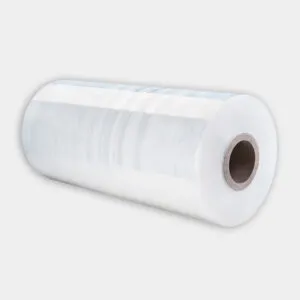Project details
Skill
Cost
Estimated Time
We may be compensated if you purchase through links on our website. Our team is committed to delivering honest, objective, and independent reviews on home products and services.
Creating a secret garden is a delightful way to transform an overgrown or underutilized outdoor space into a magical retreat. This enchanting landscape design concept allows you to craft a private sanctuary where you can relax, reflect, and reconnect with nature.
In the video above, landscape designer Jenn Nawada guides a homeowner through the process of turning a neglected area into a charming secret garden. Below, we’ll give you some tips and inspiration for creating a garden of your own.
*Costs in this article reflect an average of prices that our team found from hardware stores like Lowes and Home Depot, and on Amazon.com.
Understanding the Secret Garden Concept
A secret garden is more than just a collection of plants—it’s an immersive experience that engages all the senses. The key elements of a secret garden include:
- Hidden or partially obscured entrances
- Winding paths that lead to unexpected destinations
- A variety of plants with different textures, colors, and heights
- Secluded seating areas for quiet contemplation
- Water features or other focal points that create ambiance
By incorporating these elements, you can create a space that feels separate from the outside world, offering a sense of discovery and wonder to those who enter.
Planning Your Secret Garden
Before you begin transforming your space, have a clear vision and plan. Consider the following steps:
- Assess your available space and existing features.
- Determine your budget and timeline.
- Decide on the overall style and atmosphere you want to create.
- Choose key elements such as pathways, seating areas, and focal points.
- Select plants that will thrive in your climate and soil conditions.
- Plan for ongoing maintenance and care.
Don’t neglect that last step—the best garden design for you is one that’s within your capability to maintain in the long term.
Preparing the Space
The first step in creating your secret garden is to prepare the area by clearing it and visualizing your design.
Clearing and Cleaning
Start by removing weeds, debris, and any unwanted plants from the area. Prune back overgrown shrubs and trees that you plan to keep, shaping them to fit your new design. You can also move existing plants by digging carefully around their root balls and replanting them later.
In the video, Nawada and the homeowner begin by clearing out the overgrown space, revealing hidden features like boulders and existing plantings that can be incorporated into the new design. If it’s been a while since you’ve cleared out your yard, you may be surprised by what you have to work with.
Defining the Layout
Once the area is cleared, begin to loosely define the layout of your secret garden. Use stakes and string to mark out pathways and destination areas. Consider creating multiple entry and exit points to enhance the sense of exploration. Nawada suggests using existing features, such as large boulders, to define access points and create natural divisions within the space.
Preparing the Soil
Before you start planting, consider the composition of your soil. Many home and garden stores sell soil test kits to determine the pH and identify nutrient deficiencies. If necessary, adjust the soil pH to suit the plants you’ve chosen for your garden. Improve the soil quality by adding organic matter and compost.
Creating Destination Points
A key feature of secret gardens is the inclusion of multiple destination points that invite exploration and provide places for rest and contemplation. Nawada recommends creating at least three distinct destinations within your garden—here are some suggestions:
Seating Area
Choose a spot for a comfortable seating area where you can relax and enjoy your garden. This could be a bench, a set of chairs, or even a large, flat boulder like the one Nawada incorporates into the design. Surround this area with low-growing perennials to create a sense of enclosure without blocking views.
Edible Garden
Incorporate an edible element into your secret garden by planting fruit-bearing shrubs. Here, Nawada uses Indian summer raspberry bushes and dwarf blackberry bushes, which not only provide a delicious harvest but also create an interesting visual texture and transition to woodland areas. Plant these along existing features like stone walls to maximize space and add visual interest.
Water Feature
A water feature adds a soothing element to your secret garden. If you already have a pond, like the homeowner in the video, focus on enhancing its surroundings. Clean up the edges to improve access, and add plants that soften the transition between water and land. Here, Nawada plants a Tamukeyama threadleaf Japanese maple near the pond to provide shade and create a beautiful reflection on the water’s surface.
Selecting and Planting
As you pick your plants, think about more than just what they contribute individually. Consider how they’ll look together, but also how they’ll function together as a garden.
Plant Variety
Select plants with varying heights, textures, and colors to create visual interest throughout the seasons. In the video, Nawada uses a mix of grasses, perennials, and shrubs to achieve this effect, including:
- Hakone grass for its soft, flowing texture
- Witch hazel for early-season blooms
- Succulents for low-maintenance ground cover around water features
- Daylilies for bright pops of color
She also plants sedum, Cherokee brave dogwood, sempervivum, stonecrop, hen and chicks, lavender, and Blue Jean Baby Russian sage. You should be able to find these plants at most local nurseries.
Planting Techniques
When planting, follow these tips to ensure your plants thrive:
- Dig holes twice the width of the root ball and at the same depth.
- Add organic starter fertilizer to give plants a boost.
- Gently tease roots open before planting to encourage outward growth.
- Position plants with their best side facing the viewing area.
- Water thoroughly after planting.
Transplanting Existing Plants
Don’t overlook the potential of plants already growing in your yard. In the video, Nawada demonstrates how to transplant and divide existing daylilies, saving money and preserving plants that are already adapted to the local climate.
Finishing Touches
The little details make a big difference in a secret garden. To complete your space, add these final elements:
Mulching
Apply a layer of mulch around your newly planted areas. This helps retain moisture, suppress weeds, and give the garden a polished look. Nawada emphasizes the importance of mulching to help establish new plants and reduce maintenance.
Pathways
Create inviting pathways that lead visitors through your garden. Use materials that complement your overall design, such as stepping stones, gravel, or wood chips. Ensure paths are wide enough for comfortable walking and maintain them regularly to keep them clear and safe.
Accessories
Add personal touches to your secret garden with carefully chosen accessories. Consider including:
- Garden art or sculptures
- Bird feeders or baths
- Decorative containers for plants
- Outdoor lighting for evening ambiance
- Fences, screens, or trellises
- Entrance gates
Just don’t go overboard—these accessories should add to the ambiance, not overcrowd or detract attention from natural features, especially in a small garden.
Maintenance Tips
To keep your secret garden looking its best, follow these maintenance tips:
- Water new plants regularly until they’re established
- Prune shrubs and trees as needed to maintain their shape and size
- Remove weeds promptly to prevent them from taking over
- Refresh mulch annually to maintain its benefits
- Monitor for pests and diseases, addressing issues quickly
The specifics of care will depend on the local climate—for example, you may need to take special steps to protect plants from winter freezes. Here are some other maintenance needs to consider:
Irrigation
Depending on the climate and the types of plants you’ve chosen, you might want to consider installing an irrigation system. This can range from a simple soaker hose to an elaborate drip irrigation system. Automated options, such as timers and moisture sensors, can cut down on the time and effort you spend watering.
Seasonal Care
A secret garden will have different needs throughout the year. In the spring, focus on planting and refreshing mulch. Summer may require steady watering and pest control. Fall is ideal for pruning and preparing the garden for winter. During winter, take the time to review your garden’s layout and plan any changes you’d like to make in the coming year.
Fertilization
Using an organic fertilizer can boost plant health and ensure vibrant growth. Depending on the type of plants, you might only need to fertilize annually during the growing season, or your garden may need more frequent nutrients.
Be sure to follow the instructions on the fertilizer package to avoid over-fertilizing. We always recommend organic or slow-release fertilizers for the long-term health of your garden.
Our Conclusion
Creating a secret garden is a rewarding project that can transform an outdoor space into a magical retreat. By carefully planning, selecting diverse plants, and incorporating inviting features, you can craft a personal sanctuary that offers beauty, tranquility, and a connection to nature.
Resources
Expert assistance with this segment was provided by Yard Works, Inc. and Nawada Landscape Design.



